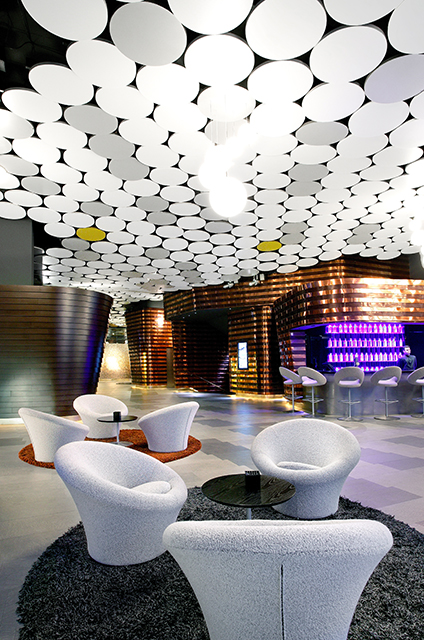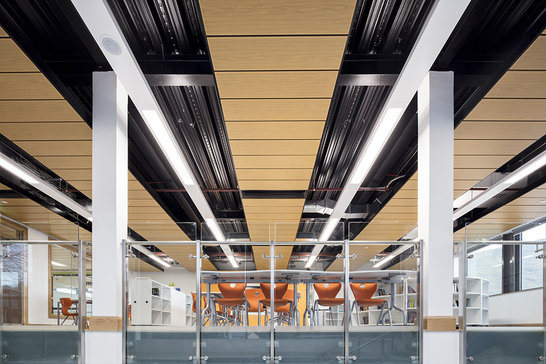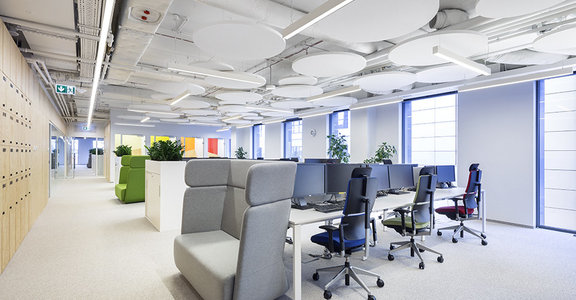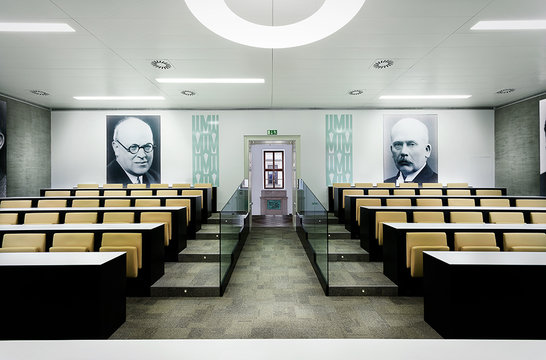
All the Right Noise
Sound is one of the frist things architects need to consider - and yet it's often one of the last things building occupants think about. It's time to take a close look at it's potential.
Using a ceiling to simply dampen sound and eliminate noise is just one side of the story. Following the principles of user-centred design in creating great spaces, how do we use sound to become a positive part of the environment?
Function drives form in the workplace
Workplace studies have tried to find the best sonic environment for productivity: creative work is best performed at around 70 decibels, while detail-focused work is best at around 55 decibels. At 85 decibels, all work suffers. Of all workplace noise, speech seems to be the most distracting. 77% of people prefer quiet when they need to focus, while 53% say other people distract them.
So, in an age of open-plan offices, ceilings need to absorb reflected sound, block direct sound and cover speech intrusion. But, beyond this, architects need to create ‘acoustic zones’ for different types of work.
Meeting areas, for example, can use ceiling clouds, canopies and vertical baffles to complement furnishings while focusing sound within the area. For focus, mid-absorption and attenuation ceilings create a quiet space. Privacy areas require high attenuation and absorption ceilings to create a secluded space where conversation stays in that area. In all these examples, function drives form to direct sound differently around the workplace, aiding wellbeing, productivity and focus.

Sound as performance
Workspaces are one thing – but how can sound enhance art? Ceilings can not only direct the eye towards the stage, but can draw the ear through sound architecture, whether that’s integrating audio speakers or using acoustic transparency and physical shape to direct sound around auditoriums. It’s entirely possible to ensure that sound plays as much a part in performance as light and shape.

A case for acoustic enhancement?
Schools, universities, hospitals and hotels need to control sound while complying with rigorous legislative demands. Schools especially need ‘zones’ of sound direction, absorption and attenuation. Canteens and common areas need to contain noise; classrooms and lecture halls need to project it.
Hospitals need ceilings to minimise the spread of noise on wards and corridors. Hotels’ rooms need to prevent the passage of noise, while their conference suites need sound to travel throughout, yet be contained. They also require large, welcoming atria and reception areas that balance aesthetics with approachability, where guests and staff can be heard clearly.
All these environments demand different solutions. Attenuation and absorption are two measures – but we need to think beyond. We need to think how our designs can direct noise towards where it’s needed, and away from where it’s not. It’s time to realise the potential of acoustics for creating great spaces that sound as good as they look.
